Table of Contents
ToggleIn today’s world, where every penny counts, mastering cost-saving strategies in purchasing isn’t just smart—it’s essential. Picture this: you’re armed with a shopping cart and a mission to save money. But instead of being a mere bargain hunter, you become a savvy shopper, navigating the aisles like a pro. Effective purchasing strategies can turn even the most mundane shopping trips into a treasure hunt for deals.
Understanding Cost Saving Strategies Purchasing
Mastering cost saving strategies in purchasing plays a crucial role in effective budgeting. Identifying areas where expenses can be reduced not only lowers costs but also enhances overall financial health. For example, bulk buying offers significant discounts when shops purchase large quantities of commodities.
Evaluating different suppliers impacts purchasing decisions. Researching multiple vendors increases options and ensures the best pricing. Regular price comparisons across online and local stores reveal potential savings.
Negotiating prices encourages competitive offers from vendors. Leveraging market trends can provide a solid basis for negotiating contracts or pricing. Additionally, staying informed about seasonal sales maximizes discounts on essential items.
Utilizing loyalty programs fosters long-term savings. Many retailers offer points or discounts for repeat purchases, which help in managing costs over time.
Tracking spending patterns identifies recurring expenses that may require reassessment. This insight reinforces the importance of eliminating unnecessary purchases or seeking alternatives.
Planning purchases strategically aids in budgeting. Creating lists before shopping can prevent impulsive buying, ensuring that only essential items are obtained.
Incorporating technology simplifies the purchasing process. Mobile apps and price comparison tools offer immediate insights into available deals, making it easy to make informed choices.
Adopting these cost saving strategies not only leads to smarter purchasing decisions but also cultivates financial responsibility. Each tactic, while beneficial on its own, works best when combined with others, leading to sustainable savings over time.
Analyzing Purchasing Costs

Understanding purchasing costs involves examining both direct and indirect expenses associated with acquiring goods and services. Identifying these costs allows for better budgeting and strategic purchasing decisions.
Direct Costs
Direct costs refer to expenses directly linked to the procurement of products. Examples include the purchase price of items, shipping fees, and any taxes applied at the point of sale. Tracking these costs closely helps identify opportunities for bulk purchasing or negotiating better terms with suppliers. Analyzing invoices and purchase orders keeps these costs transparent, enabling effective cost-saving strategies. Regular reviews of direct costs can reveal patterns that lead to enhanced negotiation leverage with vendors.
Indirect Costs
Indirect costs encompass expenses indirectly associated with purchasing functions. Categories include administrative expenses, storage costs, and depreciation of equipment used in the purchasing process. Monitoring these costs is vital for a comprehensive understanding of total purchasing expenditures. Evaluating operational inefficiencies might highlight areas for cost reduction, such as optimizing inventory levels or streamlining the purchasing workflow. Overall, assessing indirect costs aids in cultivating a strategic purchasing approach that drives both immediate and long-term savings.
Effective Cost Saving Strategies
Implementing cost-saving strategies in purchasing enhances financial efficiency. Several methods exist to achieve significant savings.
Bulk Purchasing
Bulk purchasing often reduces per-unit costs. Organizations can save on shipping and handling fees, making larger orders economically beneficial. Many suppliers offer discounts for bulk buys, incentivizing larger purchases. Companies should evaluate inventory levels to avoid overstocking situations. By assessing needs accurately, businesses can determine the optimal purchase quantities.
Supplier Negotiations
Negotiating with suppliers leads to favorable terms and pricing. Companies should approach discussions with clear objectives and data on current market trends. Presenting volume commitments during negotiations can result in price reductions. Regularly reviewing supplier contracts reveals opportunities for better deals. Building strong relationships with suppliers fosters trust and motivates them to offer incentives.
Alternative Sourcing
Exploring alternative sourcing options offers potential savings. Different suppliers may provide similar quality at reduced prices. Online platforms often showcase various vendors, allowing businesses to compare costs easily. Engaging with local suppliers can minimize shipping expenses and promote community relationships. Companies should remain open to new sourcing options to adapt to changing market conditions.
Implementing Cost Saving Strategies
Implementing cost-saving strategies significantly impacts overall financial health. A structured approach to purchasing ensures efficiency and maximum savings.
Creating a Purchasing Plan
Establishing a purchasing plan involves identifying specific needs and defining a budget. This plan should align with the company’s goals and account for both direct and indirect costs. Including a list of preferred suppliers based on evaluated pricing enhances decision-making. Assessing inventory levels before making purchases prevents overstocking and waste. Creating timelines for purchasing actions ensures that the right products arrive when needed without incurring rush shipping fees.
Tracking and Measuring Success
Tracking expenses improves awareness of spending patterns and identifies potential areas for savings. Regularly reviewing purchase data allows for adjustments in strategies when necessary. Companies can implement software tools for real-time tracking, leading to better insight into purchasing behaviors and outcomes. Recording the results of each cost-saving initiative enables businesses to measure effectiveness over time. Documenting successes and areas for improvement ensures continuous refinement of the purchasing approach.
Mastering cost-saving strategies in purchasing is vital for enhancing financial efficiency. By adopting a strategic mindset and focusing on both direct and indirect costs, businesses can uncover significant savings opportunities. Implementing practices like bulk buying and supplier negotiations not only reduces expenses but also fosters stronger supplier relationships.
Regularly tracking expenses and reviewing purchasing data empowers organizations to make informed decisions and adapt to market changes. Ultimately, a structured purchasing plan that aligns with company goals will drive sustainable financial health, ensuring long-term success in today’s competitive landscape.



